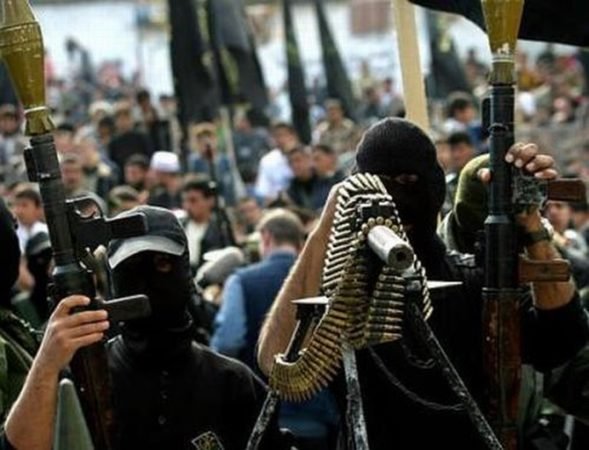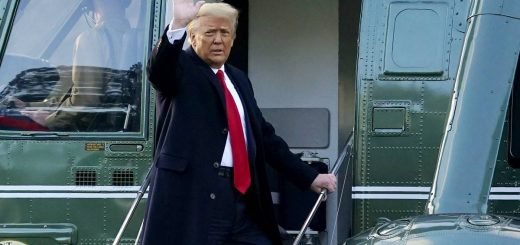14 Terror Safe Havens around the Globe: Read US State Department Report on Terrorism

US State Department released Country Reports on Terrorism 2018 this Friday in which Iran tops the list as world’s worst state sponsor of terrorism. The United State government accused Iran of spending nearly one billion dollars per year to support terrorist groups that serve as its proxies and expand its malign influence across the globe.
It accuses Tehran of funding international terrorist groups such as Hizballah, Hamas, and Palestinian Islamic Jihad and plotting terrorists all around the world, especially in Europe.
However, the list does not constitute a new announcement regarding state-sponsored terrorism, and other than Iran it lists North Korea, Sudan and Syria as the states sponsoring of terrorism
The report briefly discusses, the global challenge of chemical, biological, radiological, or nuclear (CBRN) terrorism as well as mention Foreign Terrorist Organisation and Terrorist Havens.
Here’s a brief report on the Terrorist Havens list by the state department:
Terrorist safe havens described in this report include ungoverned, under-governed, or ill-governed physical areas where terrorists are able to organize, plan, raise funds, communicate, recruit, train, transit, and operate in relative security because of inadequate governance capacity, political will, or both.
Africa
Somalia
The report says, “Terrorists used under-governed areas throughout Somalia as safe havens to plan, conduct, and facilitate terrorist operations, including mass-casualty bombings in major urban areas. Somali officials failed to implement vital national security reforms and pass legislation that could help enhance the government’s capacity to secure and govern effectively at all levels.”
The Lake Chad Region

Report Says, “Boko Haram (BH) and its offshoot ISIS-West Africa (ISISWA) maintained limited safe havens in parts of northeast Nigeria and on islands in Lake Chad, and they prevented the reestablishment of state administration, service delivery, and humanitarian relief in the broader territory surrounding Lake Chad. These safe havens are reduced from the territory BH controlled in 2014-15.”
The Trans-Sahara
According to report, Al-Qa’ida affiliate Jamaat Nusrat al-Islam wal-Muslimin (JNIM), and other groups, including Ansural Islam and ISIS in the Greater Sahara (ISIS-GS), continued to stage asymmetric attacks in the Trans-Sahara region. These terrorist groups have freedom of movement in northern and central Mali and have pushed into northern Burkina Faso. JNIM successfully inserted itself into long-standing ethnic conflicts such as the Fulani herder versus Dogon farmer conflict over grazing land and water.
South-East Asia
The Sulu/Sulawesi Seas Littoral
The sheer expanse of the area, its numerous islands, and substantial maritime traffic in the Sulawesi Sea and the Sulu Archipelago make it a difficult region to secure. Traditional smuggling and piracy groups often supported terrorist networks, including through the movement of personnel, equipment, and funds. Kidnapping-for-ransom remained an ongoing threat and a source of funding for terrorist networks based in the southern Philippines.
The Southern Philippines
Since defeating groups affiliated with ISIS in the siege of Marawi in October 2017, the Philippine government has closely tracked terrorist groups that continue to operate in some areas, particularly in the southern Philippines. The government has sustained aggressive military and law enforcement operations to deny safe haven to such groups and prevent the flow of FTFs through its territory.
The Middle East and North Africa
Egypt
The US State Department reports mentioned, ISIS-Sinai Province (ISIS-SP) used portions of Egypt’s Sinai region as a base to conduct attacks against military and civilian targets in the Sinai and mainland Egypt.
Iraq

ISIS remained the biggest threat terrorist threat for both Iraqi soldiers and civilians, it says, “ISIS remained a terrorist threat in Iraq in 2018, carrying out suicide, hit-and-run, and other asymmetric attacks throughout the country. ISIS continued to seek to produce sulfur mustard and IEDs filled with chlorine.”
It also mentions the terrorist organization Kata’ib Hizballah’s continued active presence in Iraq.
Lebanon
According to the report, “Lebanon remained a safe haven for terrorist groups in both under-governed and Hizballah-controlled areas. Hizballah used the areas under its control for terrorist training, fundraising, financing, and recruitment. The Government of Lebanon did not take significant actions to disarm Hizballah, even though Hizballah maintained its weapons in violation of UNSCR 1701.
Libya
The report called, Libya’s vast, under-governed territories safe havens for al-Qa’ida in the Islamic Maghreb (AQIM) and the Islamic State of Iraq and Levant Libya (ISIL-Libya). It suggests that the Government of National Accord (GNA), although a reliable and willing U.S. counterterrorism partner, lacks the capacity and reach to project authority into many areas of Libya and had limited ability to eliminate terrorist safe havens, prevent the flow of FTFs, or ensure effective counter-proliferation efforts.
Yemen
State Department report sees Yemen’s political instability continues to hinder efforts to enact or enforce comprehensive strategic trade controls to counter the flow of weapons and munitions in the region.
It suggests, that instability of Yemen has left Yemen vulnerable as a transit point for destabilizing weapons, including weapons emanating from Iran.
South Asia
Afghanistan
With ongoing negotiations with Afghanistan Taliban, Washinton sees, Terrorist and insurgent groups exploiting Afghanistan’s ungoverned spaces, including the border region of Afghanistan and Pakistan.
The reports say, “Islamic State’s Khorasan Province (ISIS-K), elements of al-Qa’ida, and terrorist groups targeting Pakistan, such as Tehrik-e-Taliban Pakistan (TTP), continued to use the Afghanistan-Pakistan border region as a safe haven.
It also hailed Afghanistan government cooperation with U.S. counterterrorism efforts, including participating in joint operations against insurgents in districts bordering Pakistan.
Pakistan

The United States report, lashed out Pakistan on the counterterrorism efforts, it says, “Although Pakistan’s National Action Plan calls to ‘ensure that no armed militias are allowed to function in the country,’ several terrorist groups that focus on attacks outside the country continued to operate from Pakistani soil in 2018, including the Haqqani Network, Lashkar-e-Tayyiba, and Jaish-e Mohammad.
It took on Pakistan government and military directly calling their efforts ‘inconsistent with respect to terrorist safe havens throughout the country. Authorities did not take sufficient action to stop certain terrorist groups and individuals from openly operating in the country’.
Western Hemisphere
Colombia
Rough terrain and dense forest cover, coupled with low population densities and historically weaken the Colombian government presence are cited as the top reasons in allowing terrorist groups to operate, particularly the Revolutionary Armed Forces of Colombia (FARC) and the National Liberation Army (ELN).
The report raises concerns about the ‘troubling number of FARC dissidents, which is being estimated to total 1,000 to 1,700 individuals who chose not to participate in the peace process or have since abandoned the peace process, continued engaging in terrorist and other criminal activities, particularly in border regions and areas previously controlled by the FARC
Venezuela

US report suggests, Venezuela’s porous border with Colombia, as administered by members of the former Maduro regime*, have made the country attractive to FARC and the National Liberation Army (ELN) movements in and out of the country. In addition, it also highlights the presence of Hizballah supporters and sympathizers in Venezuela.
*Trump Government formally recognised Juan Guaido as the President of Venezuela



















